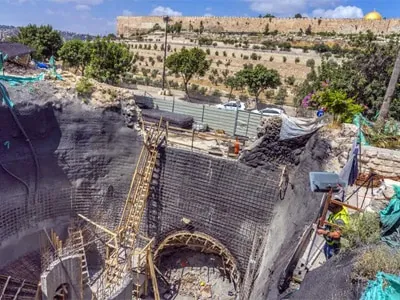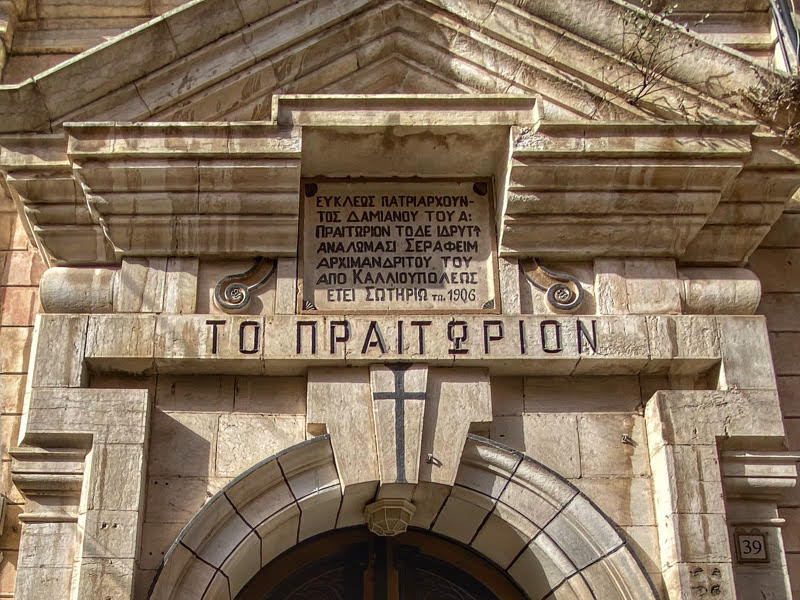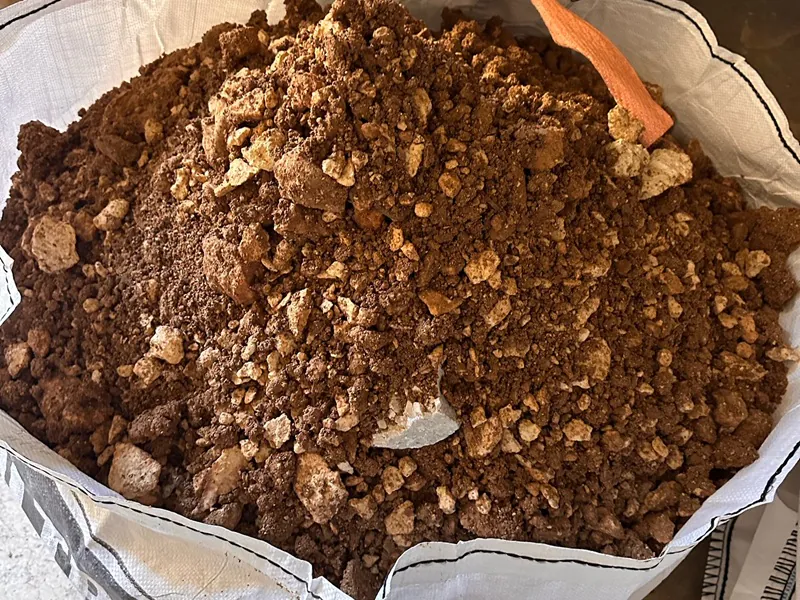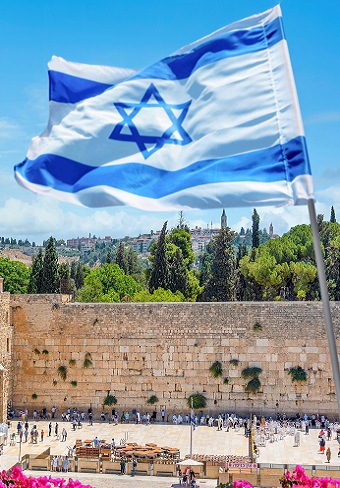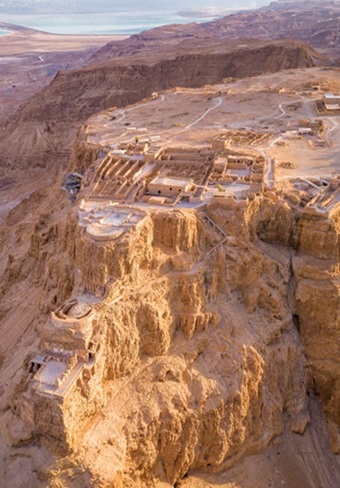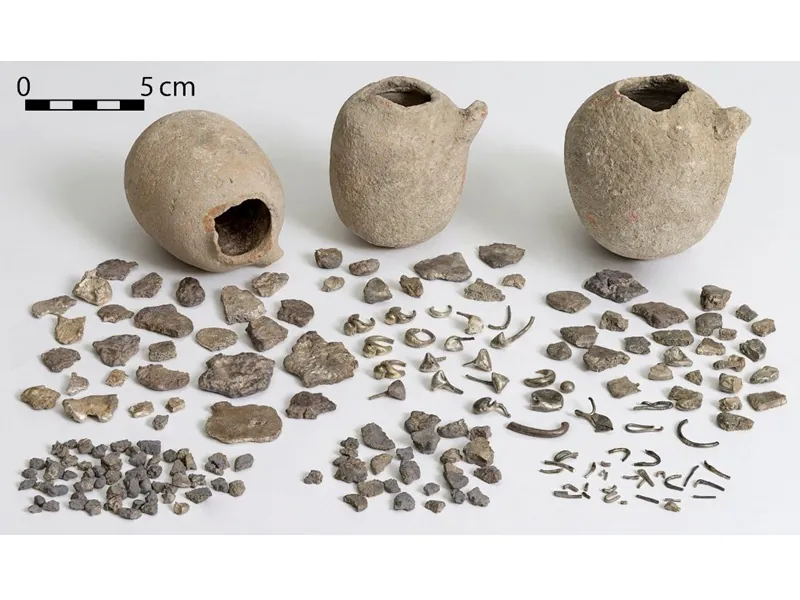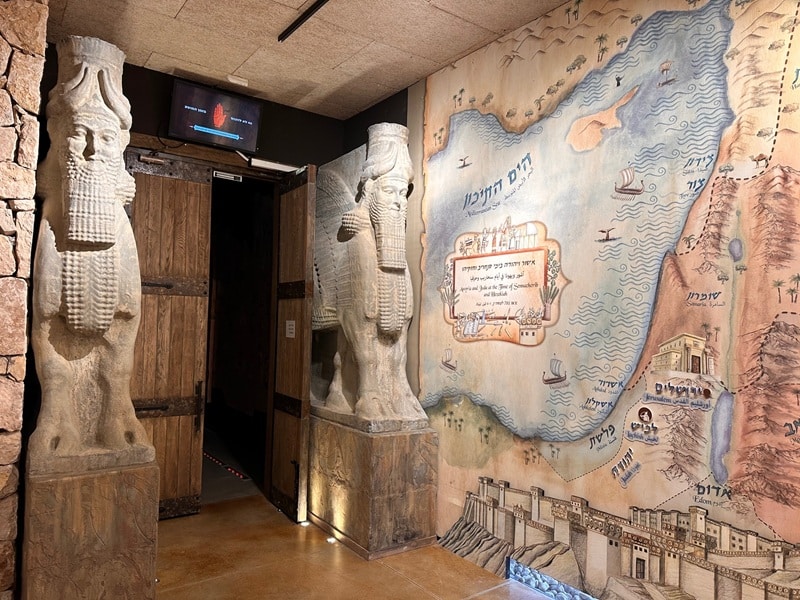Unlock the Mysteries of Capernaum: Five Archaeological Riddles

Resting on the serene shores of the Sea of Galilee, Capernaum stands as a pivotal landmark in Christian history. Following his rejection in Nazareth, Jesus found a home in Capernaum, where he conducted numerous miracles and teachings. Today, Capernaum is a revered archaeological site and a famous pilgrimage and tour destination. Yet the question lingers: do any of the archaeological findings in Capernaum offer insights into Jesus and his era? Here are five archaeological riddles centered around the ancient Capernaum.
1. Where Was Peter’s Home in Capernaum?
The specific location of Peter’s home in Capernaum remains uncertain, but tradition places it near the synagogue. According to the Gospel of Mark (1:29), Jesus visited Simon Peter’s House right after leaving the Capernaum synagogue. In the 1930s, archaeologists found an octagonal-shaped church constructed above a first-century house adjacent to the synagogue. While assuming that this church was sanctifying Peter’s home, discrepancies arise. Antoninus Martyr, a sixth-century pilgrim, describes the Peter’s church in Capernaum as a basilica, not octagonal. Additionally, the mosaic floor’s depiction of a peacock contradicts Christian art symbolism for Peter. In conclusion, the octagonal church’s connection to Peter’s home in Capernaum remains speculative.
2. Where Was Jesus’ Home in Capernaum?
 While Jesus resided in Capernaum for about three years, the exact location of his home is also not specified. Most scholars associate the octagonal-shaped church in Capernaum with the memory of Peter’s home, but this is not certain. If this church wasn’t dedicated to Peter’s memory, its purpose raises questions. What or who was it commemorating? Its mosaic floor features a spread-winged peacock. This defies conventional Christian symbolism but may symbolize Jesus. The peacock shedding and regrowing its colorful feathers can align with the resurrection theme. Perhaps the octagonal church in Capernaum, adorned with a peacock mosaic, possibly commemorates Jesus’ residence in this town? The mystery surrounding the church’s intent adds layers to Capernaum’s archaeological enigma.
While Jesus resided in Capernaum for about three years, the exact location of his home is also not specified. Most scholars associate the octagonal-shaped church in Capernaum with the memory of Peter’s home, but this is not certain. If this church wasn’t dedicated to Peter’s memory, its purpose raises questions. What or who was it commemorating? Its mosaic floor features a spread-winged peacock. This defies conventional Christian symbolism but may symbolize Jesus. The peacock shedding and regrowing its colorful feathers can align with the resurrection theme. Perhaps the octagonal church in Capernaum, adorned with a peacock mosaic, possibly commemorates Jesus’ residence in this town? The mystery surrounding the church’s intent adds layers to Capernaum’s archaeological enigma.
3. Where Was Capernaum’s First-Century Synagogue?
As with any Jewish community, Capernaum too housed a synagogue. It played a notable role in the Gospels, setting the stage for some of Jesus’ famous teachings and miracles. Noteworthy events include his extraordinary teachings (Mark 1:21-28, Luke 4:31-37), the healing of the Centurion’s servant (Matthew 8:5-13, Luke 7:1-10), the restoration of the damaged hand (Mark 6:1-6) and the exorcism of the demon-possessed man (Mark 1:23-28). While remains of Capernaum’s ancient synagogue were documented in the 1830s, later research indicated this synagogue dates to the 5th century AD, centuries after Jesus’ time. Where is Capernaum’s first-century synagogue? Probes conducted beneath the 5th-century structure uncovered the foundations of an earlier public building. Though most scholars assert these are the remains of the first-century synagogue, conclusive proof is still pending. Additional excavations beneath the 5th-century synagogue might resolve this riddle.
4. Why Was There a Bathhouse in Capernaum?
During the 1980s, excavations took place in the eastern part of Capernaum, some of which are now situated on Greek-Orthodox property. Among the findings was a first-century serial-type bathhouse. This is a surprising discovery given the village’s Jewish nature in that era, which typically resisted bathhouse culture. Moreover, the Gospels make no mention of a bathhouse in Capernaum. Comparative analysis indicates that similar serial-type bathhouses were uncovered also in Magdala and Ein-Gedi. In both cases, these parallels are attributed to Roman modifications after the suppression of the Big Jewish rebellion (66-73 AD). In conclusion, the Bathhouse in Capernaum dates to the first century but not to the time of Jesus. Unfortunately, its remains are now barely visible due to the inadequate maintenance of the archaeological finds by the Greek-Orthodox church.
5. Who Was Buried in Capernaum’s Mausoleum?
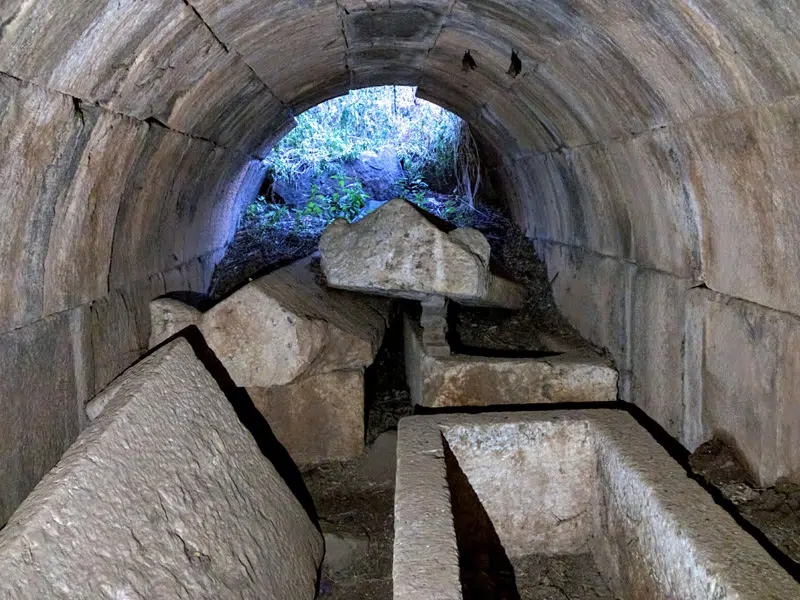 Approximately 100 meters northeast of Capernaum, archaeologists unearthed a burial cave containing four stone coffins (Sarcophagi). The use of stone coffins was very uncommon among Jews in the first-century but does align with Roman Burial practices. The excavator, Virgilio Corbo, does not rule out the possibility that this may have been the tomb of a Roman Centurion mentioned in the Gospels. According to the Gospel of Luke, a Roman Centurion built Capernaum’s synagogue and Jesus cured his servant (Luke 7:1-6). Perhaps this Mausoleum was the burial site of that centurion and his family?
Approximately 100 meters northeast of Capernaum, archaeologists unearthed a burial cave containing four stone coffins (Sarcophagi). The use of stone coffins was very uncommon among Jews in the first-century but does align with Roman Burial practices. The excavator, Virgilio Corbo, does not rule out the possibility that this may have been the tomb of a Roman Centurion mentioned in the Gospels. According to the Gospel of Luke, a Roman Centurion built Capernaum’s synagogue and Jesus cured his servant (Luke 7:1-6). Perhaps this Mausoleum was the burial site of that centurion and his family?
Intriguingly, in recent years, ultra-orthodox Jews identified this tomb as the resting place of the prophet Nahum. This might be why the tomb was covered up sometime before 2022, and is no longer accessible. The question of who lies within the mausoleum remains shrouded in the enigmatic history and archaeology of Capernaum.
A tour of Capernaum can be integrated in a day tour to the Galilee.
Contact us to inquire more about a private tour to Capernaum:
Keep Exploring
-

Unlock the Mysteries of Capernaum: Five Archaeological Riddles

